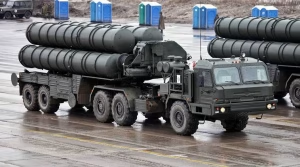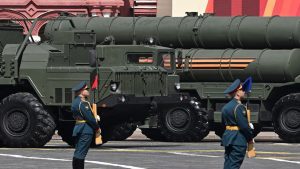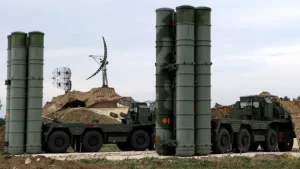New Delhi – India and Russia are engaged in advanced negotiations to acquire five additional S-400 systems, marking a significant expansion of India’s long-range air defence capabilities. Top defence ministry officials are scheduled to meet Russian counterparts this week to finalize whether the acquisition will proceed through joint manufacture or outright purchase of the advanced missile defence technology.
Timeline for S-400 Systems Deal Approval
The proposed deal for additional S-400 systems is expected to receive approval before Russian President Vladimir Putin’s scheduled arrival in India on December 5 for the annual summit with Prime Minister Narendra Modi. This strategic timing suggests both nations view the defence partnership as critical to their bilateral relationship and regional security architecture.
The expedited approval process for the S-400 systems reflects India’s urgent requirement to enhance its air defence infrastructure across multiple strategic fronts. The deal represents continuation of successful defence cooperation that has seen Russia emerge as India’s most reliable partner for advanced military technology acquisition.
Status of Original S-400 Systems Contract

India originally signed a $5.43 billion contract on October 5, 2018, for five S-400 systems from Russia. Under this agreement, two of the five S-400 systems are scheduled for delivery by the end of 2026, completing the original procurement timeline. The remaining systems from the initial contract have already been delivered and deployed at strategic locations across India.
The new proposal for five additional S-400 systems builds upon this foundation, effectively doubling India’s inventory of these advanced air defence platforms. This expansion addresses identified gaps in India’s aerial defence coverage and responds to evolving threat perceptions along multiple borders.
Strategic Deployment for Comprehensive Coverage
India plans to deploy the additional S-400 systems to protect its extensive 7,000-kilometer-plus coastline from potential aerial attacks. The systems will also address critical air defence gaps in the Northern Command area, where mountainous terrain and proximity to adversarial borders create unique security challenges requiring advanced defensive capabilities.
The strategic placement of S-400 systems along coastal regions will provide India with enhanced capability to counter threats from naval aviation, cruise missiles, and unmanned aerial vehicles. The Northern Command deployment directly addresses security concerns along borders where conventional air defence systems face limitations due to geographical constraints.
Pricing and Manufacturing Arrangements for S-400 Systems


The two nations have already reached agreement on pricing for the additional S-400 systems, incorporating annual escalation factors from the 2018 baseline price. While final modalities remain under discussion, current proposals suggest three systems will be purchased outright from Russia, while the remaining two will be manufactured in India by private sector companies through transfer of technology arrangements.
This hybrid approach for acquiring S-400 systems balances immediate operational requirements with long-term strategic objectives of building indigenous defence manufacturing capabilities. The transfer of technology component aligns with India’s broader defense modernization strategy emphasizing self-reliance and domestic production capacity development.
Government-to-Government Deal Structure
The S-400 systems acquisition will proceed as a government-to-government transaction, ensuring streamlined procurement processes and direct accountability between national authorities. Maintenance, repair, and overhaul facilities will be established in collaboration with Indian private sector partners, creating sustainable support infrastructure for long-term operational effectiveness.
Also Read: Exclusive : Pakistan US Port Proposal Targets Arabian Sea Development Deal
Officials clarified that reports suggesting India’s interest in purchasing S-500 systems are incorrect, as such platforms remain under development in Russia and have not reached operational deployment status. The focus remains exclusively on proven S-400 systems technology.
Proven Performance During Operation Sindoor


The S-400 systems demonstrated exceptional capabilities during Operation Sindoor, validating India’s investment in this technology. The Russian-made air defence platforms ensured Pakistan Air Force aircraft did not fly east of the Indus River on May 10, effectively creating an aerial exclusion zone through deterrence and active engagement capabilities.
During Operation Sindoor, S-400 systems successfully engaged multiple targets at extended ranges. The platforms destroyed a Pakistani ELINT aircraft at 314 kilometers distance in Punjab, Pakistan, demonstrating extraordinary reach. Additionally, S-400 systems brought down Pakistani F-16 and JF-17 fighters in northern sectors, proving effectiveness against modern combat aircraft.
Survivability Against Counter-Attacks
The S-400 systems also demonstrated remarkable survivability when Pakistan repeatedly targeted the installations at Adampur and Bhuj air bases using Chinese long-range weapons. Following the initial attack on May 7, Pakistani forces maintained all air assets beyond 300 kilometers from the Indian border, with minimal aircraft activity on May 10, illustrating the deterrent effect of S-400 systems.
Additional Russian Defence Acquisitions Under Consideration
Beyond these, India is exploring acquisition of RVV-BD air-to-air missiles with ranges exceeding 200 kilometers from Russia. These missiles would enhance the Su-30 MKI fleet’s capabilities, particularly given Pakistan’s deployment of Chinese-built PL-15 missiles with 200-kilometer range used during Operation Sindoor.
Integrating Russian R-37 missiles or RVV-BD into Su-30 MKI aircraft will require onboard radar upgrades. While Air Chief Marshal Amar Preet Singh mentioned considering Su-57 Russian fifth-generation fighters, the government has not finalized views on acquiring Su-57 or US F-35 platforms.

